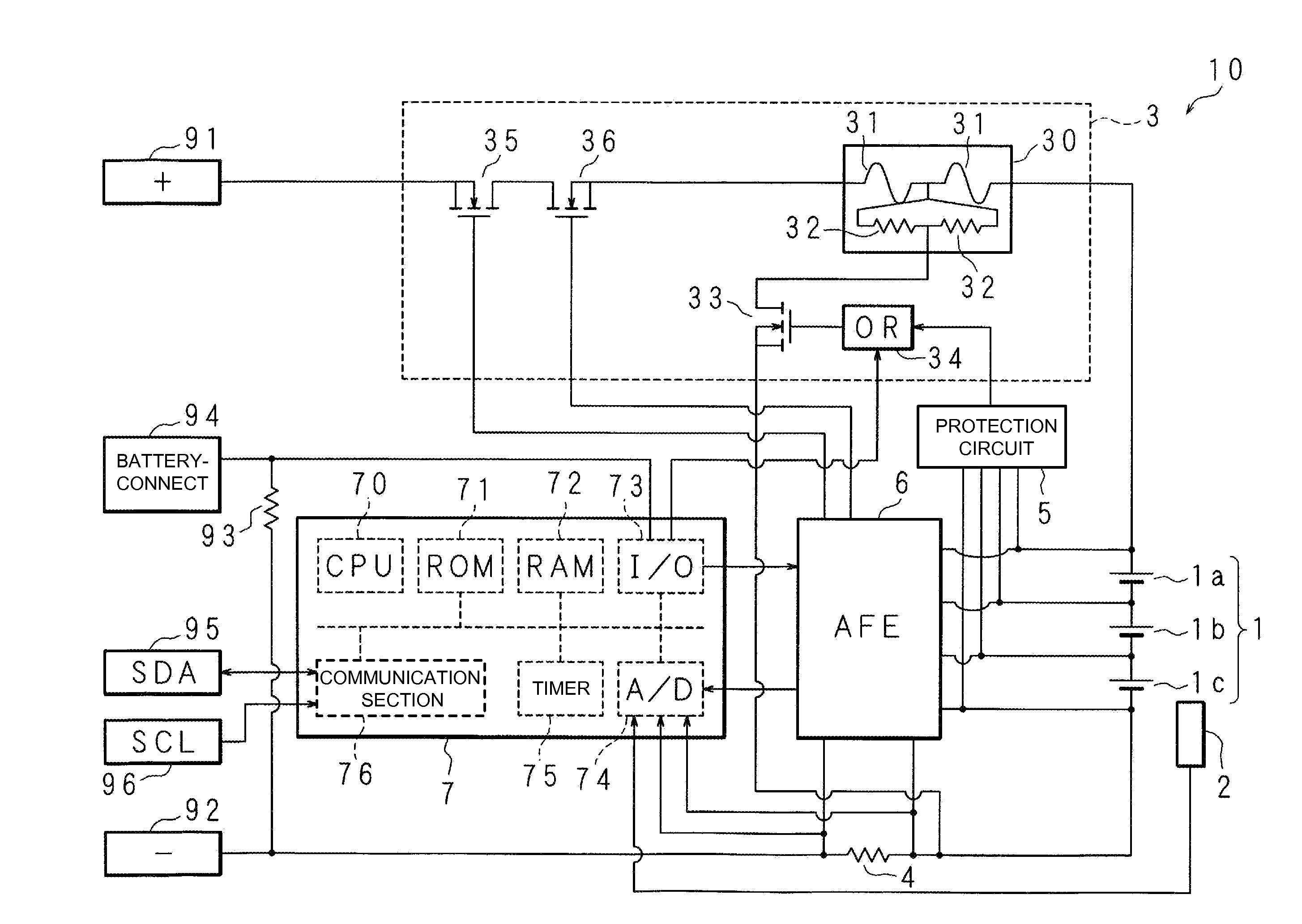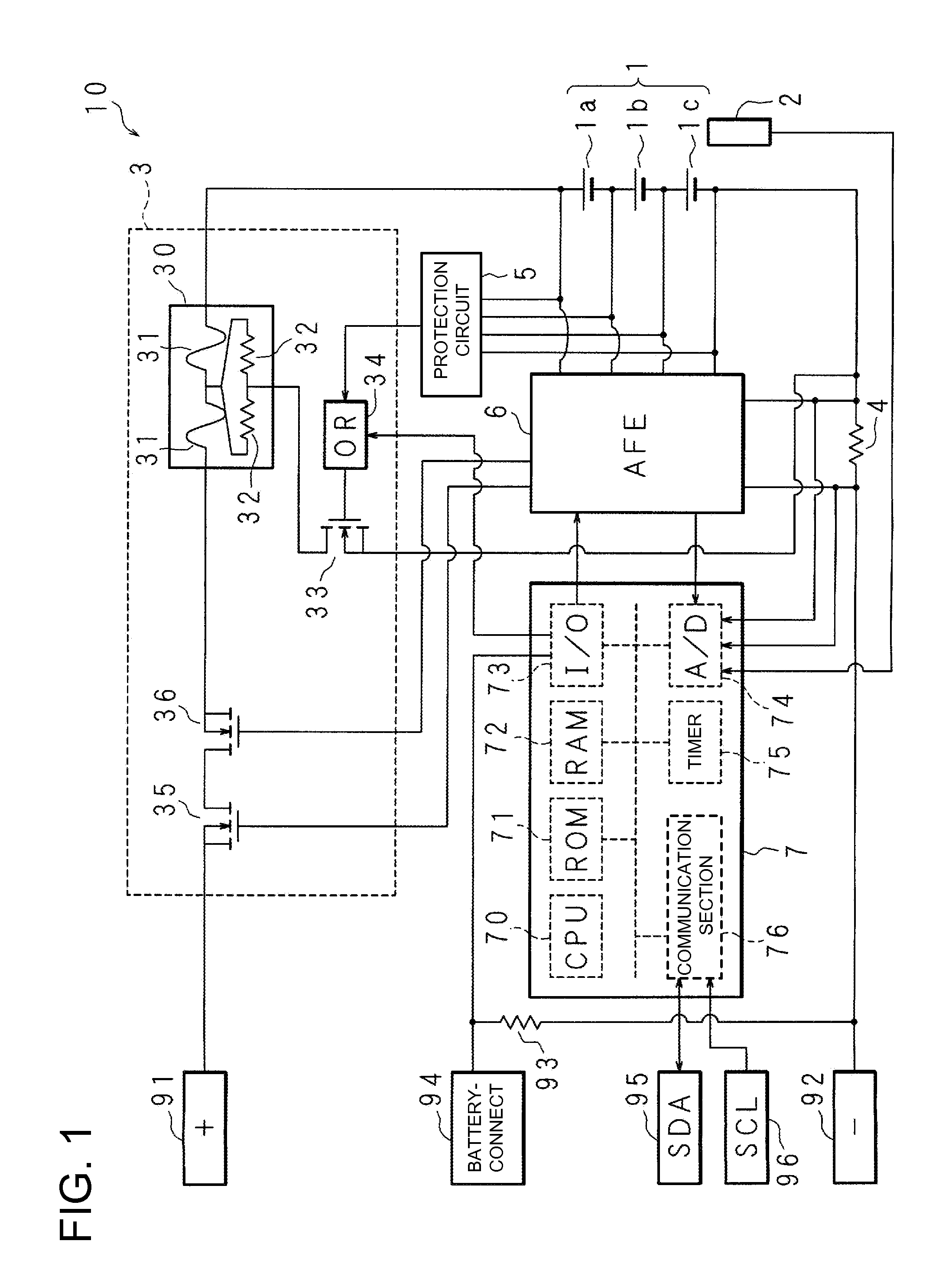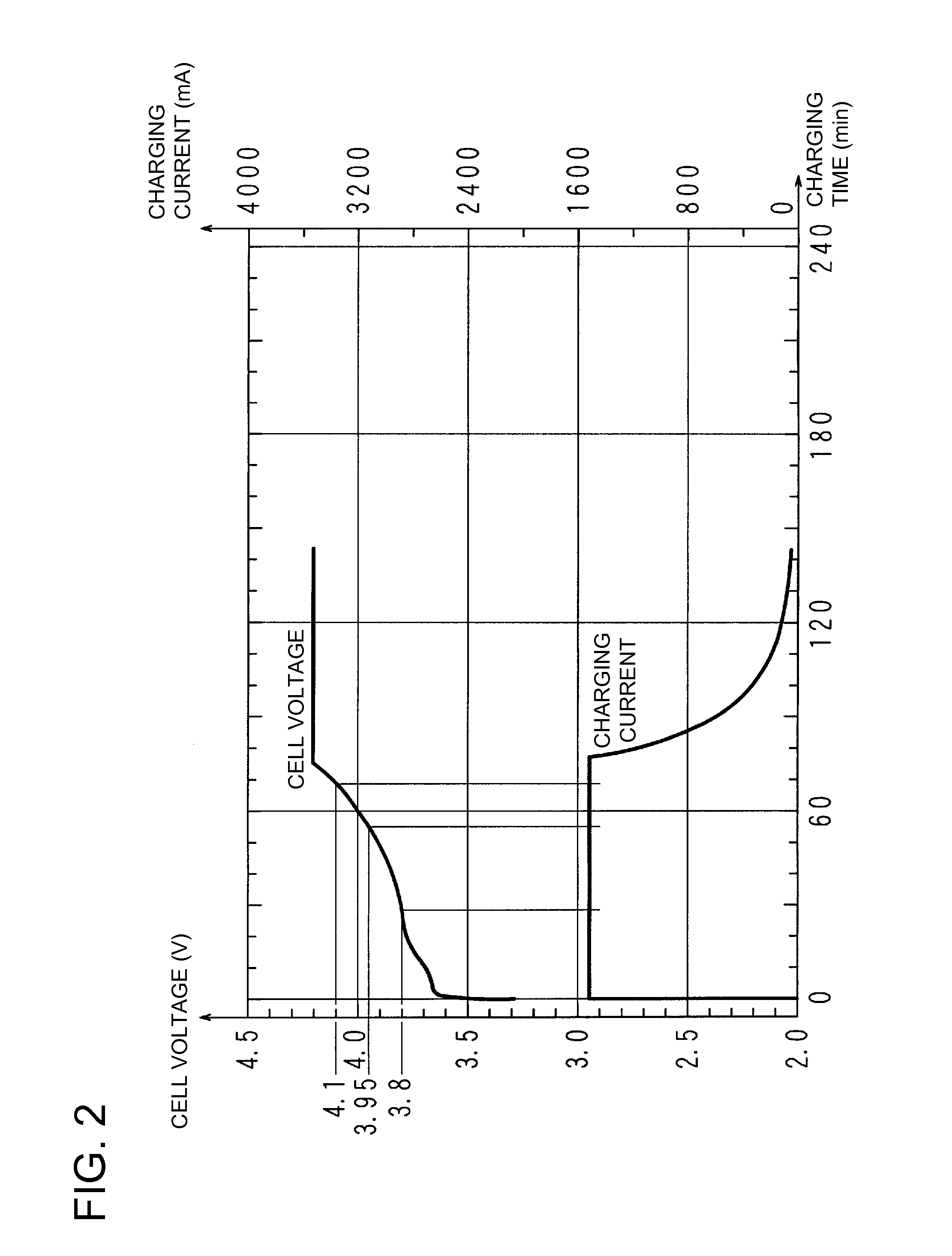Battery pack, method of determining malfunction, and a malfunction decision circuit
- Summary
- Abstract
- Description
- Claims
- Application Information
AI Technical Summary
Benefits of technology
Problems solved by technology
Method used
Image
Examples
first embodiment
[0041]FIG. 1 is a block diagram showing an example of the circuit architecture for a battery pack of the present invention. The battery pack 10 of the figure is provided with a rechargeable battery 1 made up of battery cells 1a, 1b, 1c that are lithium ion batteries connected in series in that order, and a temperature sensor 2 that detects rechargeable battery temperature. The positive electrode terminal of battery cell la and the negative electrode terminal of battery cell 1c are equivalent to the positive and negative electrode terminals of the rechargeable battery 1. The rechargeable battery 1 can also be made up of other batteries such as nickel-hydride batteries or nickel cadmium batteries. Further, the number of rechargeable battery cells is not limited to three, and there could be one, two, or four or more battery cells as well.
[0042]The positive electrode terminal of the rechargeable battery 1 is connected to the positive (+) terminal 91 of the battery pack 10 through a cut-...
second embodiment
[0071]In the first embodiment, the second voltage is lower than the resume-charging voltage (3.95V). In addition, the first embodiment judges that the current detection section has malfunctioned when charging and discharging current is less than the prescribed current and the maximum cell voltage rises one time from a voltage below the second voltage to a voltage above the first voltage. In contrast, the second embodiment judges that the current detection section has malfunctioned when charging and discharging current is less than the prescribed current and the maximum cell voltage rises several times from a voltage below a second voltage, which is greater than or equal to the resume-charging voltage, to a voltage above the first voltage.
[0072]The battery pack 10 structure for the second embodiment and battery cell 1a, 1b, 1c voltage and charging current characteristics as a function of charging time are the same as in the first embodiment, and their detailed description is abbrevia...
PUM
 Login to View More
Login to View More Abstract
Description
Claims
Application Information
 Login to View More
Login to View More - R&D
- Intellectual Property
- Life Sciences
- Materials
- Tech Scout
- Unparalleled Data Quality
- Higher Quality Content
- 60% Fewer Hallucinations
Browse by: Latest US Patents, China's latest patents, Technical Efficacy Thesaurus, Application Domain, Technology Topic, Popular Technical Reports.
© 2025 PatSnap. All rights reserved.Legal|Privacy policy|Modern Slavery Act Transparency Statement|Sitemap|About US| Contact US: help@patsnap.com



